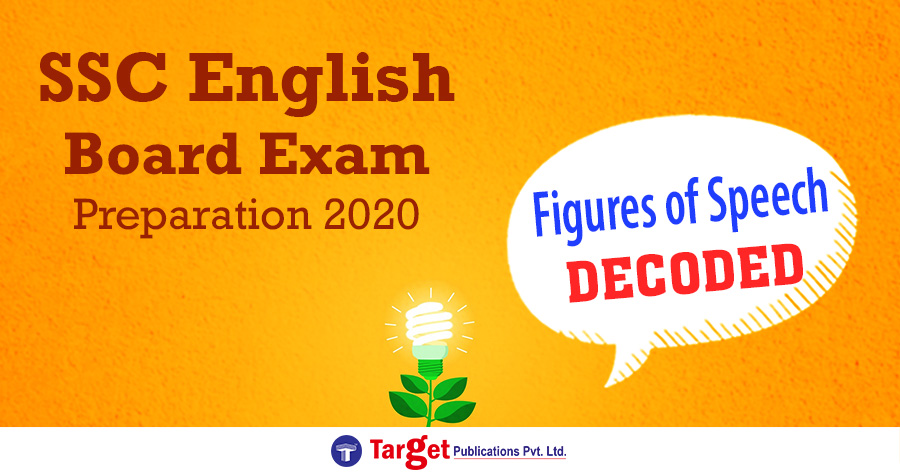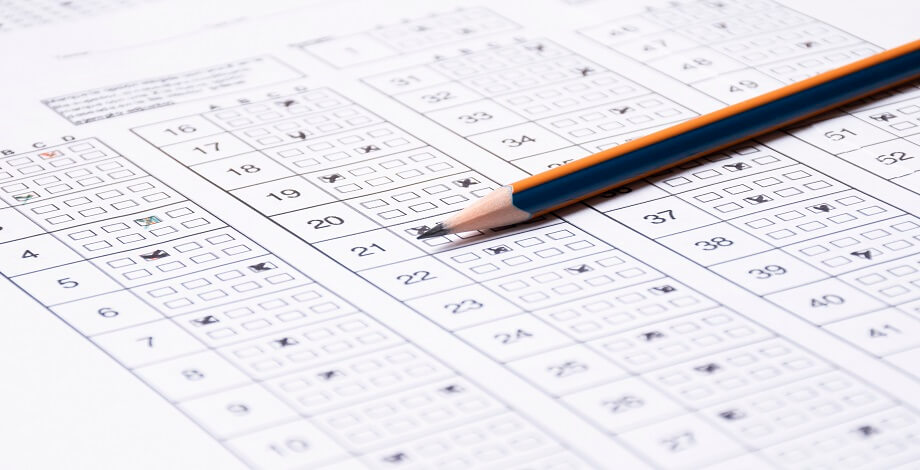Don't miss it! Get Flat 15% + Additional 15% Discount (After Adding Product to Cart) on All Std 10, Std 12, NEET & MHT-CET Products! • Free PAN India COD Available on Orders Above Rs 400
SSC English Board Exam Preparation 2020: Figures of Speech Decoded

So the new academic year begins. You have all your textbooks, all the SSC books to complement them and feel confident enough to start with your board exam preparation. In spite of all this confidence, one subject nags you at the back of your mind. A subject that is quite easy if you pay great attention to, but quite difficult if you manage to ignore it. This subject is none other than English, which usually tests students on the basis of poems and prose. Students are generally on the lookout for SSC English books to complement their textbooks in order to decode poems and score excellently therein.
I wandered lonely as a cloud
That floats on high o'er vales and hills,
When all at once I saw a crowd,
A host, of golden daffodils;
Beside the lake, beneath the trees,
Fluttering and dancing in the breeze.
These are the delightful opening lines of William Wordsworth's famous poem Daffodils. As an Std. 10th student appearing for the SSC Board, you might have a lot of questions as you read the above paragraph. First, which would be, 'How is this poet able to wander a cloud?' this would be followed by 'How can daffodils dance in the breeze?' All these puzzling questions aside, these words sure create a beautiful picture in our mind, a picture of floating as a feather does in the air, of being able to witness the happy dance of golden flowers. This happy effect that the words have on any individual is better known as a 'poetic effect'.
Many famous authors and poets such as William Wordsworth make use of this poetic effect to help a reader imagine their poetry in a more detailed manner. English as a language can be made up of two major characteristic features. Literary features and figurative features, the former refers to the actual words that help form sentences. The latter refers to using letters and words in such as way to give a dramatic effect to these sentences. This dramatic effect is mainly given in order to multiply the pleasures derived by readers. This figurative function of English is what gives form and meaning to Figures of Speech. Many SSC English books happen to cover these devices, but unfortunately not in great detail. These devices can be used both in poems and prose (stories) to help the readers thoroughly enjoy the practice of reading.
According to the Cambridge Dictionary, a Figure of Speech is, 'An expression that uses words to mean something different from their ordinary meaning.'
This definition helps us understand what exactly figures of speech are and how they function. While such a definition might not be so easily found in an SSC English book, you might have heard your teacher say it out loud in class. In the simplest of terms, any figure of speech can be understood on the basis of the context in which it is used. Let's take an example from the first line of the above poem:
I wandered lonely as a cloud
Here the poet wants to tell his readers that one day he wished he could fly and become a cloud which floats high above the ground and could wander anywhere at his will. While the poet isn't really a cloud but he wishes to be like one. How is the poet able to convey his feelings? It is quite simple really, he is able to do so with the help of a figure of speech. A simile is a poetic device that is being used here to make a direct comparison of the poet to a floating, wandering cloud.
Let us learn about the 4 most commonly used Figures of Speech which are not only covered in SSC English books, but also play a great role in your SSC Board preparation for English:
1. Simile
This was the first figure of speech that we encountered in this article. From the above example, we can infer that Simile stands for making a direct comparison between two ideas or things. Here are a few examples:
Friends are like chocolates.
Like a diamond in the sky.
Seema was famous for being as quite as a mouse.
Pro tip: You can recognize a Simile with two watchwords. These watchwords are: 'like' and 'as'.
2. Metaphor
A metaphor functions exactly like Simile when it compares two things or ideas in a line. The only difference here is that it is an indirect comparison. They are famously known as 'devices of implication' as the comparison is generally hidden. More often than not, these lines would look quite similar to statements. Here are a few examples:
All the World's a stage.
Sachet is a walking encyclopedia.
Moti was the sunshine in my life.
Pro tip: You can recognize a Metaphor by looking at how an object or idea is described in a poem.
3. Personification
The direct meaning of personification is to give a human quality to a non-living thing in a poem. Here are a few examples:
Daffodils, fluttering and dancing in the breeze.
I wandered lonely as a cloud.
Enjoy your youth before it runs away from you.
Pro tip: While reading a line in a poem, look for inanimate objects or non-living things which are given qualities that are only seen in humans. These qualities could be wandering, dancing, running etc.
4. Alliteration
Alliteration is the most commonly used poetic device in poems as it is known to give the lines a musical effect. Here the sound of a particular letter or letters is repeated throughout the line, this repetition adds to the overall poetic effect. Here are a few examples:
She sells sea shells on the sea shore.
Where the mind is without fear and the head is held high.
And so he plays his part.
Pro tip: The letter does not necessarily have to be the first letter of the word. The sound of more than one letter can also be repeated throughout the line. As long as the sound is repeated at least twice, you can identify it as Alliteration.
As a part of the English curriculum for Std. 10th, students will study eight poems (two poems per unit) from their SSC English Kumarbharati textbook. Thus, identifying the correct Figures of Speech would be full of great benefits for students to score exceptionally well. Keeping this in mind, as a part of our SSC books series, we have added a dedicated section for Figures of Speech for the understanding and practice of students in our SSC English Kumarbharati Notes. This would help students prepare exceptionally well and excel in the SSC Board Examination. Unlike other SSC English books which only scratch the surface when it comes to poetic devices, herein you will be able to understand every single device in great detail. We'd recommend this as well as our other SSC Books for excellent preparation for the SSC Board exam. Happy studying to you!




